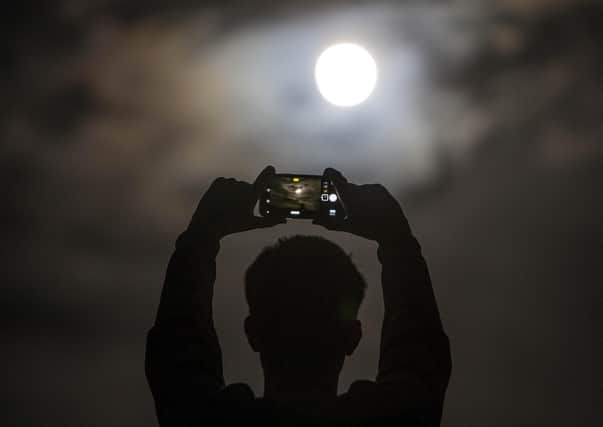Researchers from Northern Ireland think they have found the Moon’s ‘long-lost sibling’ behind Mars


The team concluded that the newly discovered asteroid may have been formed after another huge asteroid collided with the Moon during the early days of the solar system, resulting in a shard entering Mars’ orbit.
They believe the asteroid – known as (101429) 1998 VF31 – dates back to the infancy of the Solar System and the giant impacts that formed our Moon and substantially re-shaped the Earth.
Advertisement
Hide AdAdvertisement
Hide AdTo their surprise, the team found that 101429’s best spectral match was not with other known asteroids but with our nearest neighbour – the Moon.
The team utilised the European Southern Observatory’s (ESO) Very Large Telescope (VLT), using its light-collecting power to gather the highest quality data on this asteroid than ever before.
Though the unusual object’s origin is still a mystery, the researchers have a few theories.
One of those explains why the asteroid looks like the Moon – because it came from the Moon.
Advertisement
Hide AdAdvertisement
Hide AdLead author Dr Apostolos Christou, from Armagh Observatory and Planetarium, said: “The early solar system was very different from the place we see today.
“The space between the newly-formed planets was full of debris and collisions were commonplace.
“Large asteroids – we call these planetesimals – were hitting the Moon and the other planets.
“A shard from such a collision could have reached the orbit of Mars when the planet was still forming and was trapped in its Trojan clouds.”
Advertisement
Hide AdAdvertisement
Hide AdAnother scenario is that the object came from Mars itself. Just like the Moon and Earth, Mars was pummelled by impacts early in its history and a colossal impact could have sent the lunar-like asteroid into Mars’ orbit.
The ongoing research supported by STFC, the Northern Ireland Department for Communities and ESO, will continue to study the Trojans of Mars to learn about the early history of the terrestrial planets but also to inform searches for Trojans of the Earth.
To find out more about the research work at Armagh Observatory and Planetarium visit www.armagh.space
The Armagh Observatory was established in 1790 by Archbishop Richard Robinson.
Advertisement
Hide AdAdvertisement
Hide AdIt is the oldest scientific institution in Northern Ireland and the longest continuously operating astronomical research institute in the United Kingdom and Ireland.
The Armagh Planetarium was founded in 1968 by Dr Eric Lindsay, the seventh director of the Armagh Observatory.